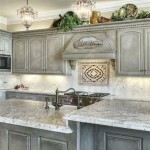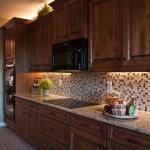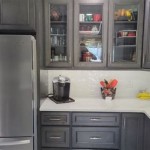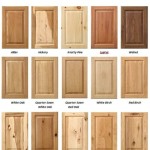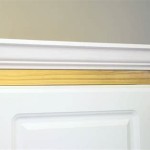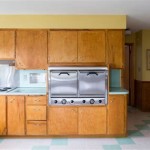Whitewashed White Oak Kitchen Cabinets: A Comprehensive Guide
Whitewashed white oak kitchen cabinets offer a versatile and increasingly popular design choice, seamlessly blending the durability and timeless appeal of white oak with a light and airy aesthetic. This style provides a more subtle and textured alternative to stark white cabinets, introducing warmth and visual interest through the exposed grain of the wood. An understanding of the characteristics of white oak, the whitewashing process, and the diverse design applications of these cabinets is essential for informed decision-making when considering a kitchen renovation.
White oak, a hardwood native to North America, is prized for its strength, resistance to decay, and distinctive grain patterns. Its naturally light color makes it an excellent base for various finishes, including whitewash. The closed-grain structure of white oak also allows for even and predictable stain absorption, contributing to a consistent and high-quality final product. Utilizing this material ensures longevity and provides a solid foundation for a aesthetically pleasing outcome.
The whitewashing process involves applying a diluted white paint or stain to the wood surface, allowing the underlying grain to remain visible. This technique creates a translucent effect, softening the wood's natural color and enhancing its texture. Different methods and products can be used to achieve varying degrees of opacity and grain definition, offering a broad spectrum of design possibilities.
Understanding the Whitewashing Process
The successful execution of a whitewashed finish on white oak cabinets hinges on a well-defined and systematically implemented process. Key steps include surface preparation, product selection, application technique, and protective sealing. Thorough preparation ensures optimal adhesion and a uniform finish, while careful product selection dictates the final aesthetic and durability.
Surface Preparation: This is the foundational step. New cabinets should be lightly sanded to create "tooth" for the stain to grip. Existing cabinets require a more in-depth cleaning and potentially stripping of old finishes. Any imperfections, such as dents or scratches, should be addressed before applying the whitewash. A clean, smooth surface is paramount for achieving a professional-looking result. The typical process starts with cleaning the cabinets using a degreaser to remove any grease or contaminants. Then, they will be lightly sanded to help the whitewash adhere properly. The cabinet should be thoroughly dusted off before whitewashing.
Product Selection: Numerous whitewashing products are available, ranging from diluted latex paints to specialized wood stains. The choice depends on the desired level of opacity and the type of finish. For a more transparent effect, a diluted stain is preferred. For a more opaque look, a diluted paint can be used. Milk paint is also a popular choice due to its natural ingredients and matte finish. Consideration should be given to the product's VOC (volatile organic compound) content, especially in enclosed spaces. Water-based options are generally lower in VOCs and easier to clean up.
Application Technique: Applying the whitewash requires a careful and deliberate approach. A brush, roller, or spray gun can be used, depending on the desired effect and the size of the project. Applying thin, even coats is crucial to prevent drips and uneven coverage. Wiping off the excess stain or paint with a clean cloth after application helps to reveal the wood grain and achieve the characteristic whitewashed appearance. The wiping off process is critical in unveiling the natural grain and adding depth to the finish. This needs to be done evenly and with the grain to prevent streaks or blotches.
Protective Sealing: Sealing the whitewashed finish is essential for protecting the wood from moisture, stains, and wear. A clear topcoat, such as polyurethane or lacquer, can be applied to provide a durable and easy-to-clean surface. The choice of sealant depends on the desired sheen level, ranging from matte to high-gloss. Multiple coats of sealant are typically recommended for optimal protection. Ensuring the sealant is compatible with the whitewashing product used is crucial to avoid any adverse reactions or discoloration.
Variations to this process include the use of tinted whitewashes, which introduce subtle hues to the wood while maintaining the whitewashed aesthetic. For instance, a slightly gray-toned whitewash can create a cooler, more contemporary look, while a warmer, cream-toned whitewash can enhance the wood's natural warmth. Experimentation with different techniques and products is encouraged to achieve the desired effect.
Design Applications of Whitewashed White Oak Cabinets
The versatility of whitewashed white oak cabinets allows them to be incorporated into a wide range of kitchen design styles, from rustic farmhouse to modern minimalist. Their neutral color palette and textured surface provide a flexible backdrop for various color schemes and decorative elements.
Farmhouse Style: In a farmhouse kitchen, whitewashed white oak cabinets contribute to a warm and inviting atmosphere. They pair well with natural materials such as reclaimed wood, exposed brick, and stone countertops. Shaker-style cabinet doors, vintage hardware, and open shelving further enhance the rustic charm. The whitewashed finish softens the wood's natural color, creating a relaxed and comfortable feel.
Modern Minimalist Style: In a modern minimalist kitchen, whitewashed white oak cabinets can add warmth and texture to an otherwise stark and sterile environment. Flat-panel cabinet doors, sleek hardware, and clean lines complement the minimalist aesthetic. The whitewashed finish provides a subtle contrast to the surrounding elements, creating a visually interesting and balanced space. Pairing whitewashed cabinets with stainless steel appliances and concrete countertops can create a sophisticated and contemporary look.
Transitional Style: Transitional kitchens blend elements of both traditional and modern design. Whitewashed white oak cabinets can serve as a bridge between these styles, offering a neutral and versatile base. A combination of shaker-style and flat-panel cabinet doors, along with a mix of traditional and modern hardware, can create a cohesive and balanced design. Pairing whitewashed cabinets with marble countertops and glass tile backsplashes can add a touch of elegance and sophistication.
Regardless of the chosen style, the key to successful design with whitewashed white oak cabinets is to create a balanced and harmonious space. Consider the overall color scheme, lighting, and decorative elements to ensure that the cabinets complement the surrounding environment. Experimentation with different textures and materials is encouraged to create a unique and personalized kitchen design.
Key Considerations for Installation and Maintenance
The installation and maintenance of whitewashed white oak cabinets are crucial for ensuring their longevity and preserving their aesthetic appeal. Proper installation techniques prevent damage and ensure structural integrity, while regular maintenance helps to protect the finish and prevent wear and tear.
Professional Installation: Employing a professional cabinet installer is highly recommended, particularly for complex kitchen layouts or custom cabinet designs. Professional installers possess the necessary skills and experience to ensure that the cabinets are properly aligned, leveled, and secured. They can also address any potential issues, such as uneven walls or floors, to prevent future problems. Correct installation is fundamental to the long-term performance and visual appeal of the cabinets.
Regular Cleaning: Regular cleaning is essential for maintaining the appearance of whitewashed white oak cabinets. Use a soft cloth and a mild soap-and-water solution to remove dirt, dust, and grease. Avoid using abrasive cleaners or harsh chemicals, as these can damage the finish. Wipe the cabinets dry immediately after cleaning to prevent water spots. Consistent cleaning prevents build-up and preserves the finish's integrity.
Protective Measures: Several protective measures can be taken to prevent damage to the cabinets. Use coasters under glasses and dishes to prevent water rings. Avoid placing hot items directly on the cabinets. Use cutting boards when preparing food. Install drawer and door bumpers to prevent slamming. These simple precautions can significantly prolong the life of the cabinets and minimize wear and tear.
Refinishing and Repair: Over time, whitewashed white oak cabinets may require refinishing or repair. Scratches, dents, and stains can be addressed by sanding the affected area and applying a fresh coat of whitewash and sealant. For more extensive damage, it may be necessary to replace the affected cabinet doors or panels. Regular inspection and prompt repair can prevent minor issues from escalating into more significant problems.
By adhering to these installation and maintenance guidelines, homeowners can ensure that their whitewashed white oak cabinets remain beautiful and functional for many years to come. Proper care and attention will preserve the cabinets' aesthetic appeal and protect their investment.

Pictures Of Kitchens Traditional Whitewashed Cabinets Kitchen Wood Tile

25 Best Collection Whitewash Oak Cabinets Home Decor And Garden Ideas Stained Kitchen New

White Kitchen Cabinets Are They Still In Style Packard Cabinetry

Traditional Whitewash Kitchen Cabinets 05 Design Ideas Org Modern Custom Kitchens

Succeeding With Quartersawn White Oak Cabinets

House Home Hot Look 40 Light Wood Kitchens We Love

Elegant Whitewash Oak Cabinets For Stunning Room Decor

White Washed Oak Kitchen Farmhouse Design Remodel Small Cabinet Styles

Limed Oak Cabinet Kitchens

11 Beautiful White Oak Kitchen Cabinet Ideas Badger Cabinets
Related Posts

